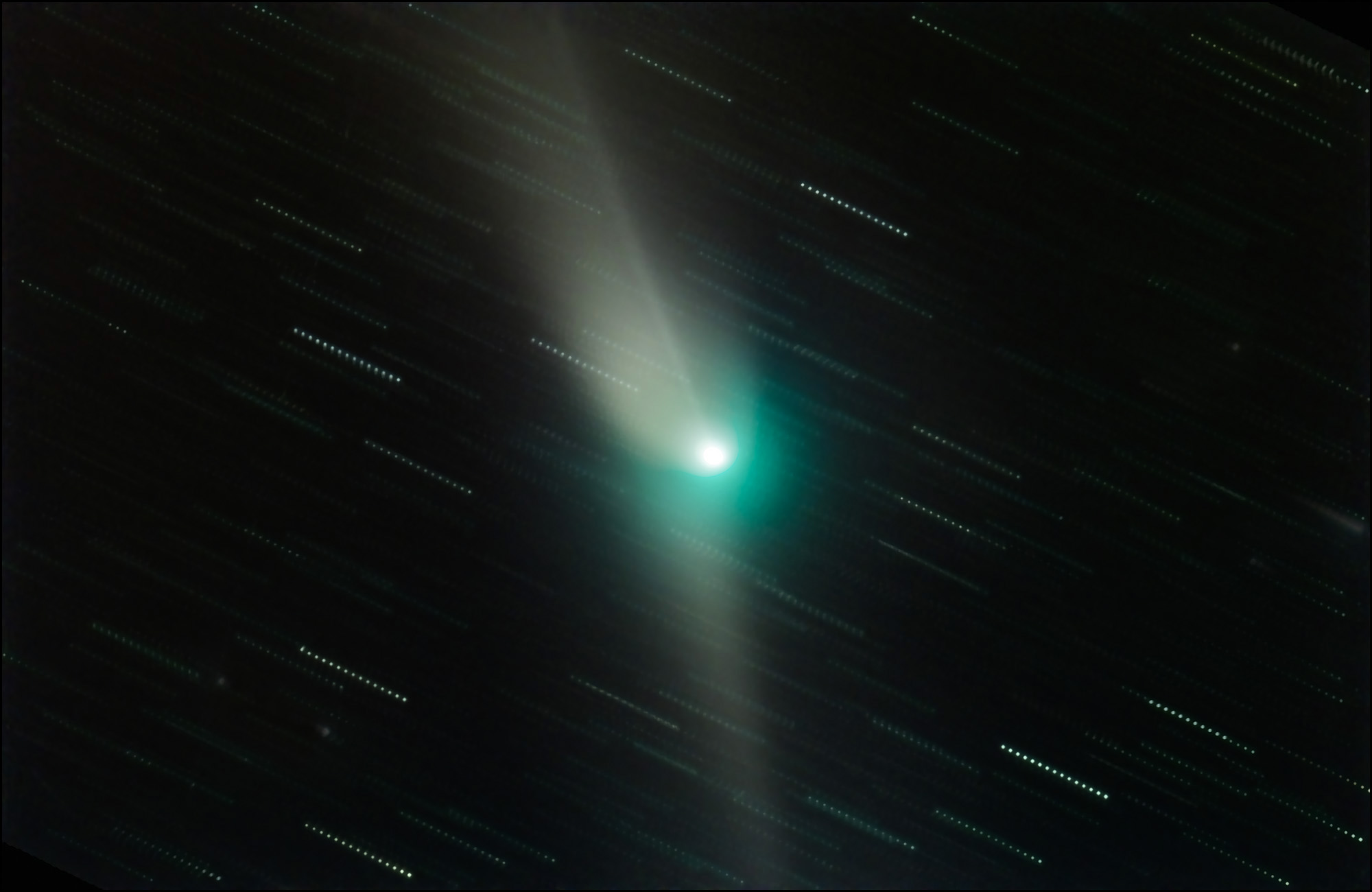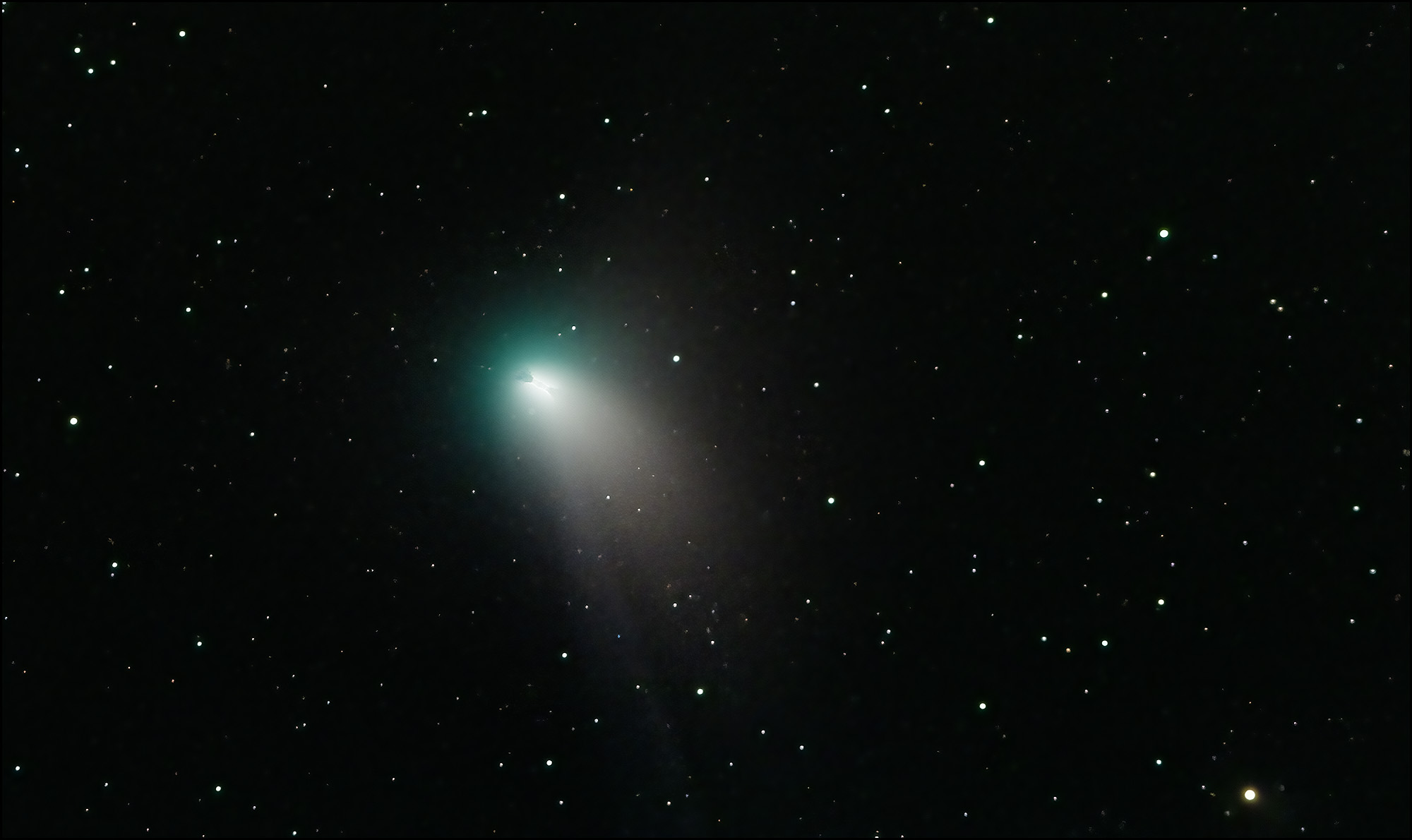Today is astronomy week. First up is our newest comet, C/2022 E3, aka "The Green Comet."
Comet photography is tricky. Normal subjects, like galaxies or a nebulas, don't move across the field of stars, so you can tell your scope to guide based on star positions and everything will be fine. But if you do that with a comet, the stars will be sharp but the comet will be blurred due to its own motion.
The bottom picture is from a stack of 60-second test exposures at Palomar Mountain that were guided on the star field. You can see some artifacts in the core of the comet as a result of that.
The middle picture was taken last night in the desert. It's from a stack of 300-second exposures that were guided on the comet but then integrated by the software based on the star field. As you can see, it doesn't represent the comet accurately at all.
The top picture is the final and best image. It's from the same stack of images, but this time the software integrated the stack based on the comet's position in each frame. As a result, you can see lots of star movement in the background, which I toned down in order to put the focus on the comet. Thanks to the 300-second exposures, you get a good view of the dust tail (broad haze), the ion tail (long, thin streak), and the small antitail at the bottom.
Even in the best picture the comet is blurry, of course. This is because it's just a small core emitting vast clouds of gas and dust, and that would be inherently blurry even if you were riding along right beside it.




Ghostly.
Way cool.
Top shelf!
Start making more money weekly. This is valuable part time work for everyone. The best part ,work from the comfort of your house and get paid from $10k-$20k each week . Start today and have your first cash at the end of this week. Visit this article
for more details.. https://createmaxwealth.blogspot.com/
Even if it doesn't represent the comet accurately, I think the middle shot is the best one artistically.
Wait, wait!! It's not GREEN !
Pingback: Lunchtime Photo – Kevin Drum
Congrats on capturing it. (I'm bummed b/c I will probably have zero chance to.)
Rather posterized on the tones, no? Dunno if that's an artifact of how you stretched it or perhaps denoising.